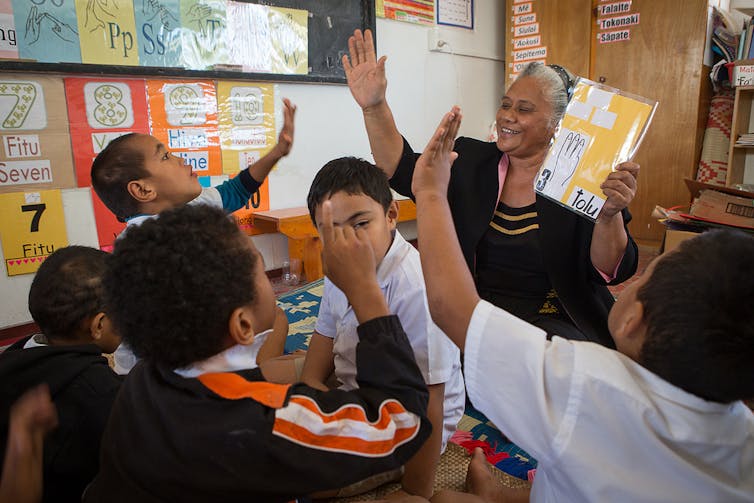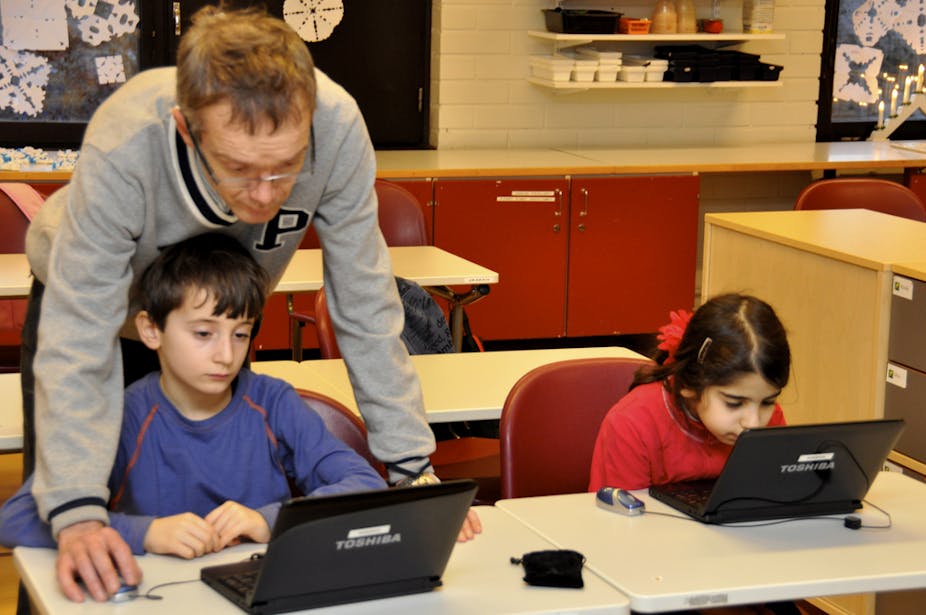Imagine this: you spend a day in a typical American public school going from one classroom to another, observing what teachers do. Then you do the same in Finland. What would you expect to see?
Many things would probably look similar. But, without a doubt, you would notice one big difference: teachers in Finland would be much less concerned about whether all students have reached the grade level, met the homework standard or feel prepared for the forthcoming standardized tests.
In my previous job as director general at the Finnish Ministry of Education in Helsinki, I had an opportunity to host scores of education delegations from the United States. They often did what I asked you to imagine above.
After spending a day or sometimes two in Finnish schools, they were puzzled. Among other things they said was the following: the atmosphere in schools is informal and relaxed. Teachers have time in school to do other things than teach. And people trust each other. A common takeaway was that Finnish teachers seem to have much more professional autonomy than teachers in the United States to help students to learn and feel well.
So what’s the evidence for teachers in Finland having more autonomy?
What we know about the teaching profession
We have more anecdotal evidence than solid research to answer this important question. And we have surprisingly little internationally comparable evidence about what teachers do in their schools.
The 2013 Teaching and Learning International Survey (TALIS) conducted by the Organisation for Economic Co-operation and Development (OECD) offered some insights into teachers’ working conditions across 30 countries.
Some other studies provide some further details. For example, the 1999 TIMSS Video Study shed light on how teachers teach mathematics and science in Australia, Hong Kong, the US and four other countries.
And a new study by Professor Linda Darling-Hammond and her colleagues at Stanford University opens a few new windows to better understand how teachers are educated and what they do in their schools around the world. But we don’t know exactly how professional autonomy of teachers affects teaching and learning in different countries.
Experience of teachers in US, Finland
We do know that teachers’ workplaces provide very different conditions for teaching in different countries.
First, teachers in the US work longer hours (45 hours/week) than their peers in Finland (32 hours/week). They also teach more weekly, 27 hours compared to 21 hours in Finland.
This means that American teachers, on average, have much less time to do anything beyond their teaching duties (whether alone or with colleagues) than teachers in most other OECD countries.

Second, over half of American middle school teachers report that they never teach jointly with other teachers in the same classroom, compared to about one-third of teachers in Finland. And 42% of US teachers report never engaging in joint projects across classes or age groups. In Finland, 23% of teachers lack that experience.
But having freedom to teach alone by being the only teacher in the classroom doesn’t provide teachers with professional autonomy.
Voices of teachers
I have studied classrooms in Finland and in many other countries during the past 20 years. One way to find out how teachers teach is through international surveys and studies mentioned earlier. Another way is to visit schools and listen to what teachers have to say about it.
In Finland, teachers often say that they are professionals akin to doctors, architects and lawyers. This means, they explain, that teachers are expected to perform in their workplaces like pros: use professional judgment, creativity and autonomy individually and together with other teachers to find the best ways to help their students to learn.
In the absence of common teaching standards, Finnish teachers design their own school curricula steered by flexible national framework. Most importantly, while visiting schools, I have heard Finnish teachers say that due to absence of high-stakes standardized tests, they can teach and assess their students in schools as they think is most appropriate.
The keyword between teachers and authorities in Finland is trust. Indeed, professional autonomy requires trust, and trust makes teacher autonomy alive.
Many US visitors to Finland have told me about very different voices of American teachers. They have told me about teachers who must teach by predetermined scripts.
In the US, I have seen teachers drilling students for standardized tests to make the mark. Teachers tell me that they have no choice but to do that because the test results are part of their performance evaluations.
I have also received letters from American teachers who are frustrated because of lack of professional judgment, respect and trust in their work. This is why they leave teaching too early and for good.
School autonomy versus teacher autonomy
The Global Educational Reform Movement (GERM) that emerged in the 1990s has adopted school autonomy as the driver of excellence and improvement. The basic assumption of this movement is that in order to compete, schools need more autonomy.
This is evident in current education policies that offer parents more alternatives between public schools, private schools and various independent (charter schools, free schools, academies) schools in Sweden, Chile, England, Australia and in the US.
Some recent studies suggest that granting schools with more autonomy does not necessarily improve quality of education. For example, the Grattan Institute, a public policy think tank based in Australia, recently concluded that “on autonomy, Australia and other countries have the wrong strategy.” In the US, research on privately managed charter schools that have more freedom to organize their work has not been able to show that school autonomy would lead to better student learning.
In fact, the OECD recently concluded that greater autonomy in decisions related to curriculum and assessment – in other words, teacher professional autonomy – tends to be associated with better student performance.
But teacher autonomy should not be mixed with autonomy of the school.
School autonomy has often led to lessening teacher professionalism and autonomy for the benefit of greater profits for those who manage or own private schools, charter schools or other independent schools. Boston College’s Professor Andy Hargreaves has warned about unintended consequences of greater school autonomy. It is about the freedom of the school management, not necessarily the teacher, who operate without due regard for the community or for local democratic control.
I have argued, that teachers in the US are necessarily no worse or better than teachers in Finland. Both in the US and Finland, they decided to become teachers for the same reason: they want to make a difference in children’s lives.
That said, I don’t think that the primary problem in American education is the lack of teacher quality, or that part of the solution would be to find the best and the brightest to become teachers. The quality of an education system can exceed the quality of its teachers if teaching is seen as a team sport, not as an individual race.
And this is perhaps the most powerful lesson the US can learn from better-performing education systems: teachers need greater collective professional autonomy and more support to work with one another.
In other words, more freedom from bureaucracy, but less from one another.

